Even though Daesh has been facing serious setbacks in Iraq and Syria with its major strongholds getting demolished by the security forces, the month of August 2017 did not bring the expected joy across European cities. Three cities in Europe ¬¬¬¬- Barcelona, Turku (Finland), Brussels and London in the UK were targeted, in all likelihood, by Islamic terrorists. These frequent attacks across Europe and in UK have jolted the collective security framework of the Europe which was considered to be the prominent coordinated response mechanism of the European community against terrorism. Initiation of various measures like the European Security Strategy – Shared Vision, Common Action of June 2016 (European Union, 2016), The North Atlantic Treaty Organisation’s (NATO) Strategic Concepts 2016 published at Warsaw Summit 2016 (North Atlantic Treaty Organisation, 2016), and European defence ‘White Paper’ of June 2016 (European Parliament, 2016) are some of the prominent measures initiated by the European Union (EU) countries to deal with terrorism effectively.
Before examining the impact of these continuing terror strikes and limitations of the European collective security system, the details of the incidents that once again shook Europe since last month, are briefly narrated below.
Spain: In the first instance, on August 17, terrorist struck one of the most popular locations known as Las Ramblas in Barcelona City, killing 13 people and injuring more than hundred (BBC Europe, 2017). This terror group had, in fact, planned a second strike in the seaside Catalan town of Cambrils and located South of Barcelona. The suspects were planning to use an Audi A3 car, in a now familiar mode of mowing down innocent civilians in crowded areas. This was however, prevented in an intelligence-based operation carried out in time, by the Police. The operation led to the killing of five suspects, who were attempting to carry out a similar attack. The Interior Minister of Catalonia confirmed that the attack in Barcelona, and the planned action in Cambrils, were linked (Jones, 2017).
The overall trend analysis of terror strikes across Europe in recent past suggests that the Barcelona attack was planned in as sophisticated a manner as the earlier major attacks in Europe such as the Paris attack in November 13, 2015; Brussels on March 22, 2016; Berlin on May 17, 2017, and the London strike on June 03, 2017. All these attacks had one thing in common; the attackers were self-motivated individuals who were generally operating on their own, although the other available details of these incidents reveal that in the Las Ramblas case a group did exist. Four men namely Driss Oukabir, Sahal el Karib, Mohammed Aalla and Mohamed Houli Chemlal were members of an Islamic cell responsible for the attack on August 17, 2017. They were arrested by the Spanish Police and moved to Madrid where they were produced before Special Tribunal for Terrorism at National Court, Madrid on August 23, 2017 (Burgen & Cobain, 2017).
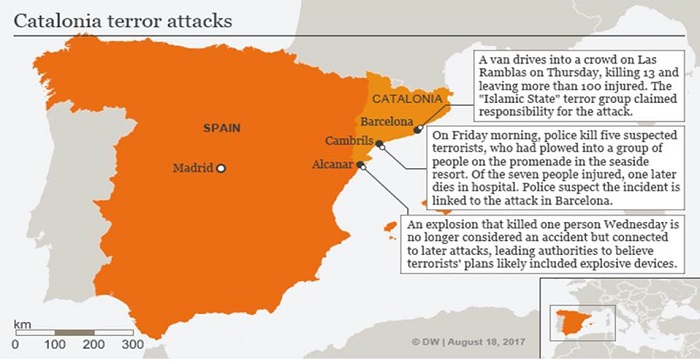
Investigations revealed that the four were part of a larger cell consisting of 12 men of Moroccan descent. The Spanish investigators confirmed their identities as under:
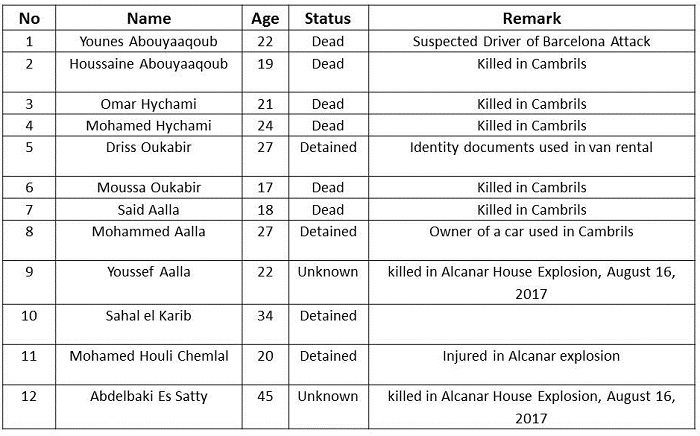
During the course of the investigation, the arrested suspects admitted that they were planning a bigger attack and identified the slain Imam Abdelbaki Es Satty as the co-plotter. The Spanish authorities confirmed that Es Satty, an Arabic teacher, had regularly travelled to Belgium, which is considered to be the epicentre of many Daesh inspired plots (BBC Europe, Barcelona Attack : Suspects 'planned to hit key monuments', 2017).
Finland: The following day on August 18, 2017, Finland, one of the most peaceful countries of Europe, witnessed a deadly stabbing rampage at the Market Square in the city of Turku.
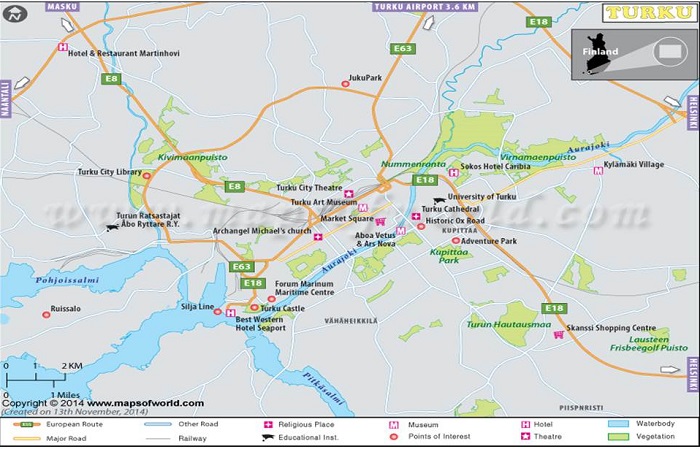
The attacker, an 18-year-old asylum seeker of Moroccan descent, stabbed several people, killing eight. The attacker was quickly arrested and identified as Abderrahman Mechkah. Authorities treated the incident as the first terrorist attack in the country.
After the incident, Justice Minister of Finland, Antti Hakkanen, urged parliamentarians to fast-track legislation that would strengthen the government’s intelligence-gathering powers. Finance Minister, Petteri Orpo, suggested that the legal hurdles pertaining to the arrest of suspected people for any extremist activity should be timely addressed. The Interior Minister, Paula Risikko, added that the government would soon draft a law making it a crime to assist unauthorized migrants. Some other parliamentarians suggested setting up of detention centres for rejected asylum-seekers pending deportation. (KUOSA & CHAN, 2017).
London: Within a weeks’ time, on August 25, 2017, in London, a man was detained outside the Buckingham Palace for cxausing injuries to three police officers. The attacker had used a four feet sword to attack the policemen. The 26-year-old man from Luton area in London was taken into custody and questioned by the counter-terrorism detectives. The British agencies treated the incident as an act of terrorism (Dearden , Buckingham Palace attack: Terror suspect reached for 4ft sword and shouted 'Allahu Akbar', 2017).
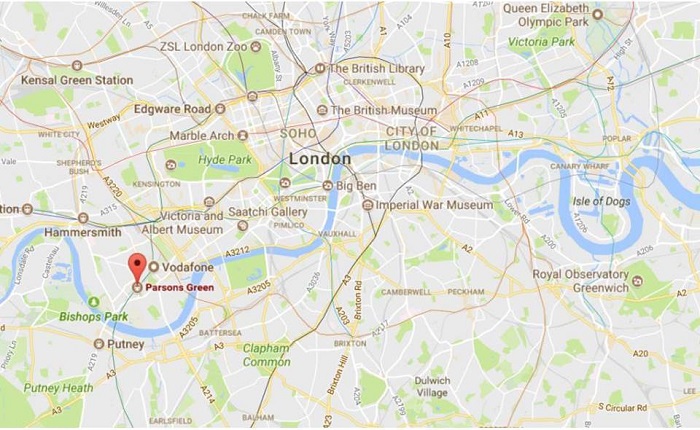
London also witnessed an IED explosion on September 15, in the London Underground metro at Parsons Green Tube station. In this, 29 people were injured. After this attack the British Prime minister declared on the evening of September 15, 2017 that the threat level across United Kingdom has been raised from ‘Severe’ to ‘Critical’. It means military personnel will replace the police officer for their guard duties and certain protected sites will remain inaccessible for public. As a precautionary measure the British Armed Police are introduced on the transport networks and streets providing an extra protection (Cobain, Dodd , & Siddique, 2017). The UK Police have so far arrested 7 persons. Significantly, all of the arrested/detained youth are stated to be Iraqi/Syrian refugees (Dearden, 2017).
Brussels: In between, on August 26, the scene of terrorist action once again shifted to Brussels where a member of the Islamic State (IS) carried out knife attack that wounded a soldier. The stabbing took place at the Boulevard Emile Jacqmain, in the centre of the city. According to the French Press Agency, France Presse, quoting a report dated Aug. 26, published in ‘Amaq’, the propaganda outlet of Daesh, said, “The perpetrator of the stabbing operation in Brussels is one of the soldiers of the Islamic State,” (Agence France Presse , 2017). Belgian Federal Prosecutor’s office issued a statement identifying the 30-year-old attacker as of Somalian origin.
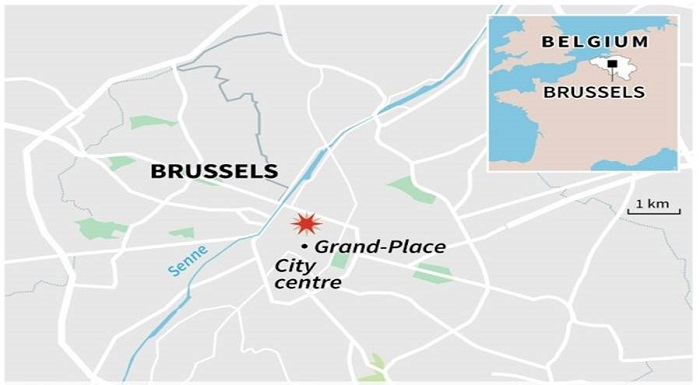
Why Europe?
For very obvious reasons, USA should be listed as the most attractive target of the Islamic terrorist but for equally obvious reasons, it also has been the most difficult theatre to penetrate and operate in on a sustained basis. Therefore, Europe including the UK, from the very beginning, were identified by the Daesh leadership as the best alternative and almost equally as attractive as the US, for its terror operations. For one, any action of any magnitude, in any European city attracts more publicity globally than those carried out in other parts of the world such as Asia or Africa. Besides, most of the prominent European cities have significant presence of local and migrant Muslim youth with better connect with their families in their turbulent homelands; the liberal democratic societies of Europe with full religious freedom provide wide opportunities to promote and propagate radical views; media and net connectivity are unrestricted; inter-city movement is equally easy and so on. For these and other associated factors like significant level of social and economic inequality, the availability of disaffected and disenchanted youth for structured or self-radicalisation, is high.
In Europe, France and Belgium have been the real hot-spots, facing the brunt of intense terror activities of the Islamic radicals. Both countries being important European centres signifying core western interests and values, are seen as attractive targets for the terrorists. Consequently, Brussels has also emerged as a prominent location for counterterrorism investigators of different affected European countries, who along with the Federal investigating agencies of Belgium, have assertively tracked down Daesh recruitment process, its sleeper cells and other related terror activities in and around Brussels. It may also be noted that amongst the prominent Western countries, Belgium is known to have provided the highest number (on a per-capita basis) of fighters to Daesh in Syria (Hart, 2017). That should clearly establish Brussel’s centrality in the overall scheme of the terrorist organisation.
Therefore, it would be appropriate to suggest that despite the continuing defeat of Daesh forces in Mosul, Iraq and Raqqa, Syria, the terror organisation’s ideological appeal and religious outreach would still finds resonance in the ‘low-cost, high-payoff’ mode of terror attacks in the European region. It would remain an attractive proposition for the terror group, not only to project Daesh ideology in various parts of the world, but also to send a message to its followers and sympathisers worldwide that it would be a bit premature to write its obituary.
In this regard, most parts of Europe, which is laden with tourists, particularly in this season, presents itself as an attractive target to implement the global terror campaign of Daesh. Beyond the physical impact of terror, these attacks also affect the economy of the region and raises several security related alarms. In this context, it may be noted that Daesh has always, through its propaganda network, been exhorting its cadres to intensify terror attacks through stabbings, ramming vehicles in crowded areas and using explosives to carry out high-profile attacks in the European theatre to attract maximum global attention.
Moroccan and West Asian Connections
An in-depth analysis of the terrorist attacks across the Europe underscores involvement of terrorists of Moroccan descent. France, Belgium and Spain have significant presence of Moroccan population. The steady rise in the arrival of migrants from Morocco, between 2016 and 2017, have added to the Muslim population of these European states, strongly hinting towards the emerging linkage between migration and terrorism. Authorities across Europe are endorsing this perception. Hungarian Foreign Minister Peter Szijarto, while addressing the media after the Barcelona attack said, “It is evident to everyone that there is a correlation between illegal immigration and terrorism”. While recommending certain preventive measures he said, “Europe must protect itself, and the security of the people must be guaranteed” (Szijjártó, 2017).
Brussels also came into limelight when two of its Councillors vowed to implement Islamic Sharia law in Belgium and mentioned this in their election manifesto. Most of the Muslims in Brussels are of Moroccan (70 percent) and Turkish (20 percent) origin. The remainder (10 percent) came from Albania, Egypt, Pakistan and North Africa. They began arriving in Belgium in the 1960s as guest workers. Although the guest-worker program was terminated in 1974, many immigrants stayed back by using family-reunification laws and brought over their families. Molenbeek area of Brussels, has an estimated 25 percent Muslim population. Various terror incidents and their linkages to Molenbeek has posed growing insecurity of the multinational companies operating in Molenbeek, forcing them to leave that municipal area (Kern, 2012).
Apart from Morocco, Europe and UK are full of migrants and resident ethnic communities from most of the Gulf and West Asian countries. According to the Joint EUROPOL-INTERPOL report on migrant smuggling network published in May 2016, more than 90 percent of the migrants entering into the EU are facilitated by criminal networks. The report has cited four prominent routes from where the migrants enter EU. First is the western Mediterranean route via Spain and Portugal where nearly 7164 illegal crossings were recorded in 2015 and most of the migrants were of Guinean, Algerian and Moroccan descent. The second route emanates from Turkey, also called South Eastern route, via Greece or Bulgaria by Sea or Land. Due to the worsening situation in Syria and Iraq, nearly 885,386 crossings were recorded along this route in 2015. Third, the eastern route, enters the EU from Belarus, Moldova, Ukraine and Russia. This route recorded nearly 1920 crossings of migrants of Afghan, Vietnamese and Syrian origin. And finally the fourth route which is called the Nordic route moves across Russia via Norway or Finland from where more than 2000 migrants attempted crossings in 2015. The report further confirmed that, based on intelligence collected by EUROPOL and INTERPOL an unprecedented increase in the number of irregular migrants entering EU was observed since 2014 and the scale of these migratory flows reached to unprecedented level in 2015 that continued through 2016. The report underscored the view that the consistent flow of migrants over entire Europe, puts the law enforcing and security agencies under enormous pressure. Thus, amongst the law enforcing agencies of Europe, there is growing concern about utilisation of these routes by radicalised foreign fighters and terror organisations also for the purpose funding their activities.
In addition, the newly arrived migrants have added complexities to the social fabrics of Europe by radicalising the existing resident Muslims in these countries. The established link has been identified by the EUROPOL between terrorism and illegal migration, where an opportunistic use of migrant smuggling networks and their logistics to support terrorism-related activities across Europe is identified (EUROPOL & INTERPOL, Executive Summary, 2016).
Migrant Smuggling Routes and Hotspots
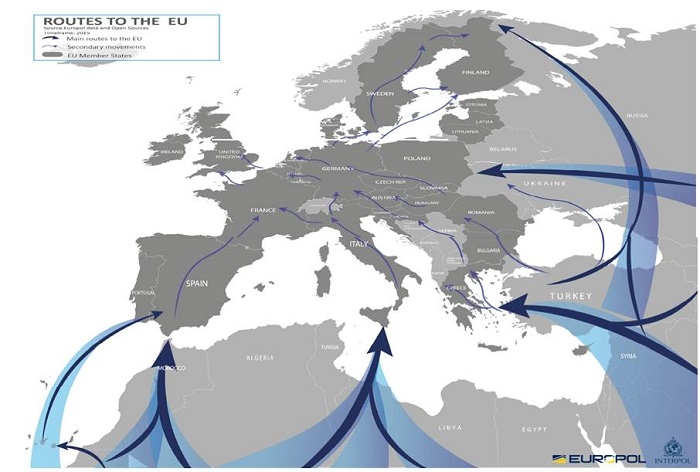
Terror Strikes and Collective Security of the Europe
The continuing terror attacks once again highlight the need for Europe to have a fresh look at their collective security architecture that evolve around security strategies as mentioned at the beginning. It must be acknowledge that perhaps no other region has established such comprehensive counter-terrorism structure. In the wake of Paris terror attack of November 13, 2015, France had appealed to the EU to invoke mutual assistance clause of the treaties for the first time in the history of EU. Article 42(7) Treaty on the European Union (TEU) calls on member states of the Union to come together and fight against armed aggression by all the means available (European Political Strategy Centre, 2015). This appeal by France provided a new political dimension to the collective security of the Europe, stretching from the Baltics to Cyprus.
In addition, perhaps now there is also a need for Europe to revitalise its political solidarity and focus on collective security mechanism capable of tackling increasingly threatening international landscape of terror. These attacks have also strongly established the linkage between external and internal security. Thus the homeland security of Europe has emerged as an indispensable area of cooperation for Europe, which conventionally believes in cooperative military engagements in the field of security.
Counter-terror mechanism forms the major area of homeland security where European countries need to come together. To ensure an effective response to these challenges, in January 2016, Europol created the European Counter Terrorism Centre (ECTC), an operations centre and hub of expertise that reflects the growing need for the EU to strengthen its response to terror. This need to be strengthened and expanded by creating similar regional hubs. Unfortunately, the ECTC is manned merely by 39 staff members and 5 seconded national experts (EUROPOL, About European Counter Terrorism Centre - ECTC, 2016) and also some regions are still debating the desirability of establishing their regional hubs of the ECTC.
It may be appropriate to conclude with Brahma Chellaney’s observations that the evolving dominant narrative of incendiary nativism and its use as political rhetoric by populist political leaders across Europe has further raised vulnerabilities of Europe and has added emergent insecurities across Europe and has least (Chellaney, 2016). The failure to address the ideological perspective of radicalisation, has emerged as a new security challenge across Europe. According to him, it is time for Europe to introspect its collective approach towards the issue of Islamic radicalisation, which has disturbed the collective security architecture of the Europe by inspiring terror strikes across Europe. While doing so, there is an immediate need for the European agencies and policymakers to tackle Islamist ideology that underpins these terror incidents. (Chellaney, How to Stop Terrorism in Europe, 2017). It can be achieved by launching various awareness campaigns discrediting the extremist ideology.
Due to its close geographical proximity to the unstable West Asian region, which is destabilised due to armed action in Syria and Iraq, there is immediate need for Europe to address this issue on priority basis. It needs to inclusive, based more on developing a new counter-narrative to the radical Islamic ideology propagated by the Daesh and other global radical Islamic entities which are unlikely to disappear with the military victories in Syria and Iraq. The real work starts now as the followers of Al Baghdadi flee back to new safer areas.
References
• Agence France Presse . (2017, August 27). IS claims Brussels knife attack on soldiers. Retrieved September 02, 2017, from http://www.capitalfm.co.ke: http://www.capitalfm.co.ke/news/2017/08/man-knife-shot-dead-stabbing-soldier-brussels/
• BBC Europe. (2017, August 27). Barcelona and Cambrils attacks: What we know so far. Retrieved August 12, 2017, from http://www.bbc.com: http://www.bbc.com/news/world-europe-40964242
• BBC Europe. (2017, August 22). Barcelona Attack : Suspects 'planned to hit key monuments'. Retrieved from http://www.bbc.com: http://www.bbc.com/news/world-europe-41010469
• Burgen, S., & Cobain, I. (2017, August 22). Barcelona attack: four suspects face court after van driver is shot dead. The Guardian. Retrieved September 12, 2017, from https://www.theguardian.com/world/2017/aug/21/police-searching-barcelona-van-driver-shoot-man
• Chellaney, B. (2016, September 05). How to stop terrorism in Europe. The Strategist. Retrieved September 09, 2017, from https://www.aspistrategist.org.au/stop-terrorism-europe/
• Chellaney, B. (2017, August 22). How to Stop Terrorism in Europe. Project Syndicate. Retrieved August 22, 2017, from https://www.project-syndicate.org/commentary/how-to-stop-terrorism-in-europe-by-brahma-chellaney-2016-08?referrer=/MSPPeN8SI1
• Cobain, I., Dodd , V., & Siddique, H. (2017, September 16). London tube bombing: PM says terror threat level raised to critical. The Guardian. Retrieved September 21, 2017, from https://www.theguardian.com/uk-news/2017/sep/15/parsons-green-district-line-suspended-in-west-london-over-incident
• Corcoran, K. (2017, August 22). These are the 12 suspects who are dead or under arrest after the Barcelona attacks. Business Insider. Retrieved September 12, 2017, from http://www.businessinsider.com/barcelona-attack-list-of-suspects-police-killed-or-arrested-2017-8?IR=T/#younes-abouyaaqoub-shot-dead-august-21-1
• Dearden , L. (2017, August 26). Buckingham Palace attack: Terror suspect reached for 4ft sword and shouted 'Allahu Akbar'. Retrieved September 04, 2017, from http://www.independent.co.uk: http://www.independent.co.uk/news/uk/crime/buckingham-palace-attack-london-terror-suspect-isis-police-injured-4ft-sword-arrested-luton-name-a7913936.html
• Dearden, L. (2017, September 25). Parsons Green attack: Seventh person arrested in Cardiff over London Tube bombing. Independent. Retrieved September 27, 2017, from http://www.independent.co.uk/news/uk/crime/parsons-green-attack-arrest-cardiff-suspect-london-tube-bombing-newport-wales-isis-a7965531.html
• European Parliament, D. P. (2016, April). On the way towards a European Defence Union - A White Book as a first step. Retrieved September 12, 2017, from http://www.europarl.europa.eu: http://www.europarl.europa.eu/RegData/etudes/STUD/2016/535011/EXPO_STU%282016%29535011_EN.pdf
• European Political Strategy Centre. (2015, December 22). From Mutual Assistance to Collective Security :Article 42(7) TEU: Orchestrating Our Response to New Threats. Strategic Notes. Europe. Retrieved September 05, 2017, from https://ec.europa.eu/epsc/publications/strategic-notes/mutual-assistance-collective-security_en
• European Union. (2016, June). Shared Vision, Common Action: A Stronger Europe A Global Strategy for the European Union’s Foreign And Security Policy. Retrieved September 12, 2017, from http://www.eeas.europa.eu: http://www.eeas.europa.eu/archives/docs/top_stories/pdf/eugs_review_web.pdf
• EUROPOL. (2016, January). About European Counter Terrorism Centre - ECTC. Retrieved September 05, 2017, from https://www.europol.europa.eu: https://www.europol.europa.eu/about-europol/european-counter-terrorism-centre-ectc
• Europol. (2016). European Union Terrorism Situation and Trend Report (TE SAT) 2016. Retrieved September 12, 2017, from https://www.europol.europa.eu: https://www.europol.europa.eu/sites/default/files/documents/europol_tesat_2016.pdf
• EUROPOL, & INTERPOL. (2016). Migrant Smuggling Networks - A Joint EUROPOL INTERPOL Report. Comprehensive Situation Analysis Report. Retrieved September 12, 2017, from https://www.europol.europa.eu/newsroom/news/europol-and-interpol-issue-comprehensive-review-of-migrant-smuggling-networks
• Hart, B. (2017, August 26). Suspected Terrorists Attack Police in Brussels, London. New York. Retrieved September 04, 2017, from http://nymag.com/daily/intelligencer/2017/08/possible-terrorists-attacked-police-in-brussels-london.html
• Jones, S. (2017, August 18). Cambrils attack: four suspects shot dead by one officer, police say. The Guardian. Retrieved September 12, 2017, from https://www.theguardian.com/world/2017/aug/18/cambrils-attack-four-suspects-shot-dead-by-one-officer-police-say
• Kern, S. (2012, November 12). "Belgium Will Become an Islamic State". Retrieved September 07, 2017, from https://www.gatestoneinstitute.org: https://www.gatestoneinstitute.org/3442/belgium-islamic-state
• KUOSA , M.-L., & CHAN, S. (2017, August 22). Moroccan Man Admits Deadly Stabbing Attack in Finland. Newyork Times. Retrieved August 22, 2017, from https://www.nytimes.com/2017/08/22/world/europe/finland-stabbing-terrorism.html
• North Atlantic Treaty Organisation. (2016, March 29). Warsaw Summit Communiqué. Retrieved September 12, 2017, from http://www.nato.int: http://www.nato.int/cps/en/natohq/official_texts_133169.htm
• Szijjártó, P. (2017, August 22). Ministry of Foreign Affairs and Trade. Retrieved August 23, 2017, from The threat of terrorism in Europe remains extreme: http://www.kormany.hu/en/ministry-of-foreign-affairs-and-trade/news/the-threat-of-terrorism-in-europe-remains-extreme
Image Source: https://www.usatoday.com/story/news/world/2017/02/07/usa-today-white-house-donald-trump-terrorist-attacks/97584176/






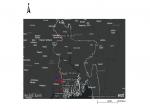




Post new comment